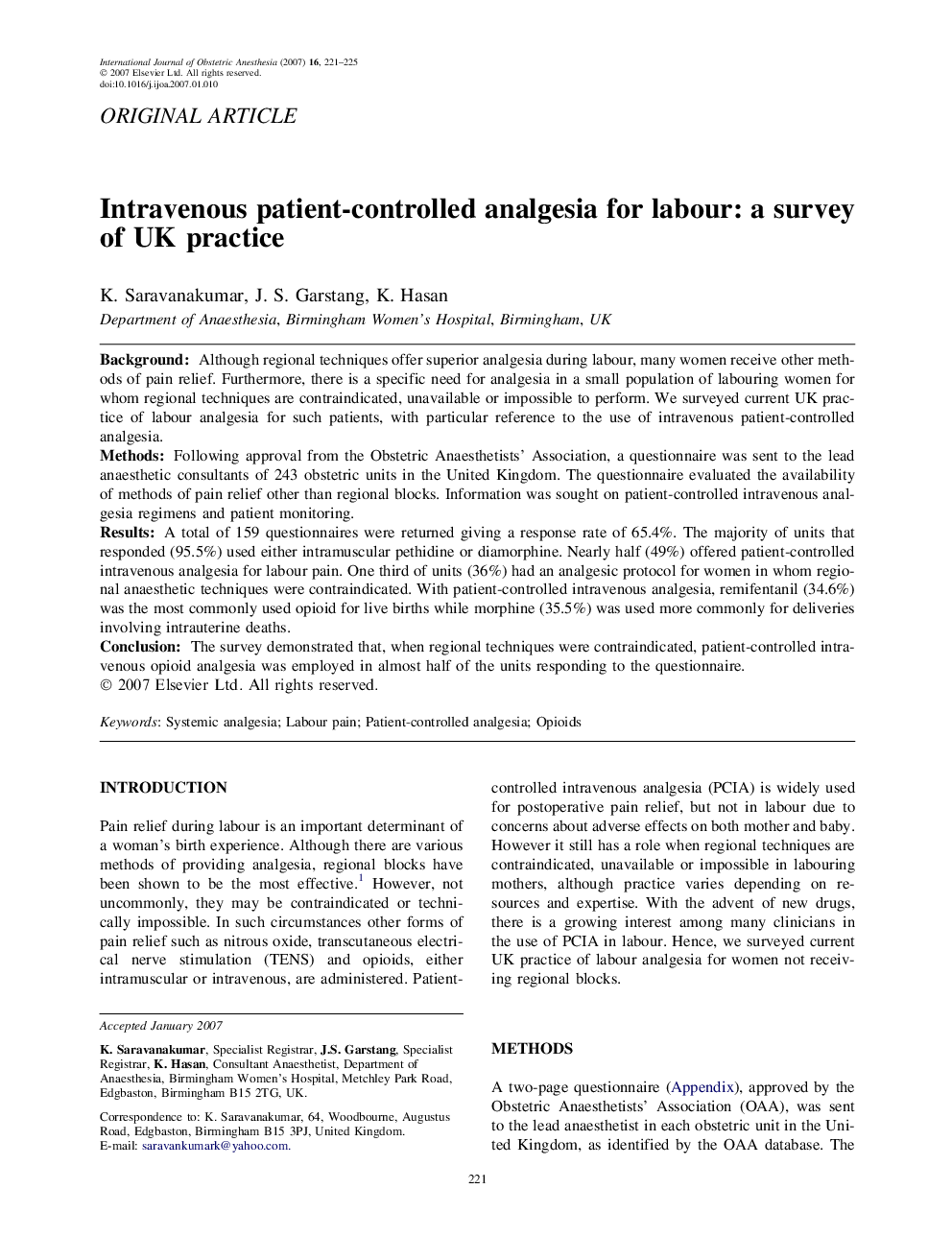| Article ID | Journal | Published Year | Pages | File Type |
|---|---|---|---|---|
| 2758586 | International Journal of Obstetric Anesthesia | 2007 | 5 Pages |
BackgroundAlthough regional techniques offer superior analgesia during labour, many women receive other methods of pain relief. Furthermore, there is a specific need for analgesia in a small population of labouring women for whom regional techniques are contraindicated, unavailable or impossible to perform. We surveyed current UK practice of labour analgesia for such patients, with particular reference to the use of intravenous patient-controlled analgesia.MethodsFollowing approval from the Obstetric Anaesthetists’ Association, a questionnaire was sent to the lead anaesthetic consultants of 243 obstetric units in the United Kingdom. The questionnaire evaluated the availability of methods of pain relief other than regional blocks. Information was sought on patient-controlled intravenous analgesia regimens and patient monitoring.ResultsA total of 159 questionnaires were returned giving a response rate of 65.4%. The majority of units that responded (95.5%) used either intramuscular pethidine or diamorphine. Nearly half (49%) offered patient-controlled intravenous analgesia for labour pain. One third of units (36%) had an analgesic protocol for women in whom regional anaesthetic techniques were contraindicated. With patient-controlled intravenous analgesia, remifentanil (34.6%) was the most commonly used opioid for live births while morphine (35.5%) was used more commonly for deliveries involving intrauterine deaths.ConclusionThe survey demonstrated that, when regional techniques were contraindicated, patient-controlled intravenous opioid analgesia was employed in almost half of the units responding to the questionnaire.
